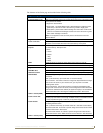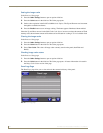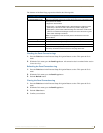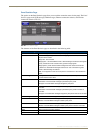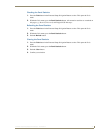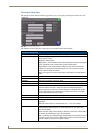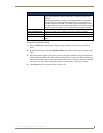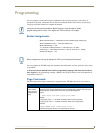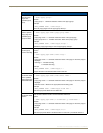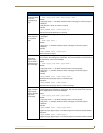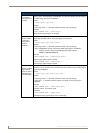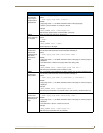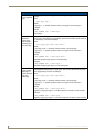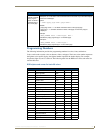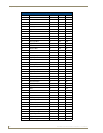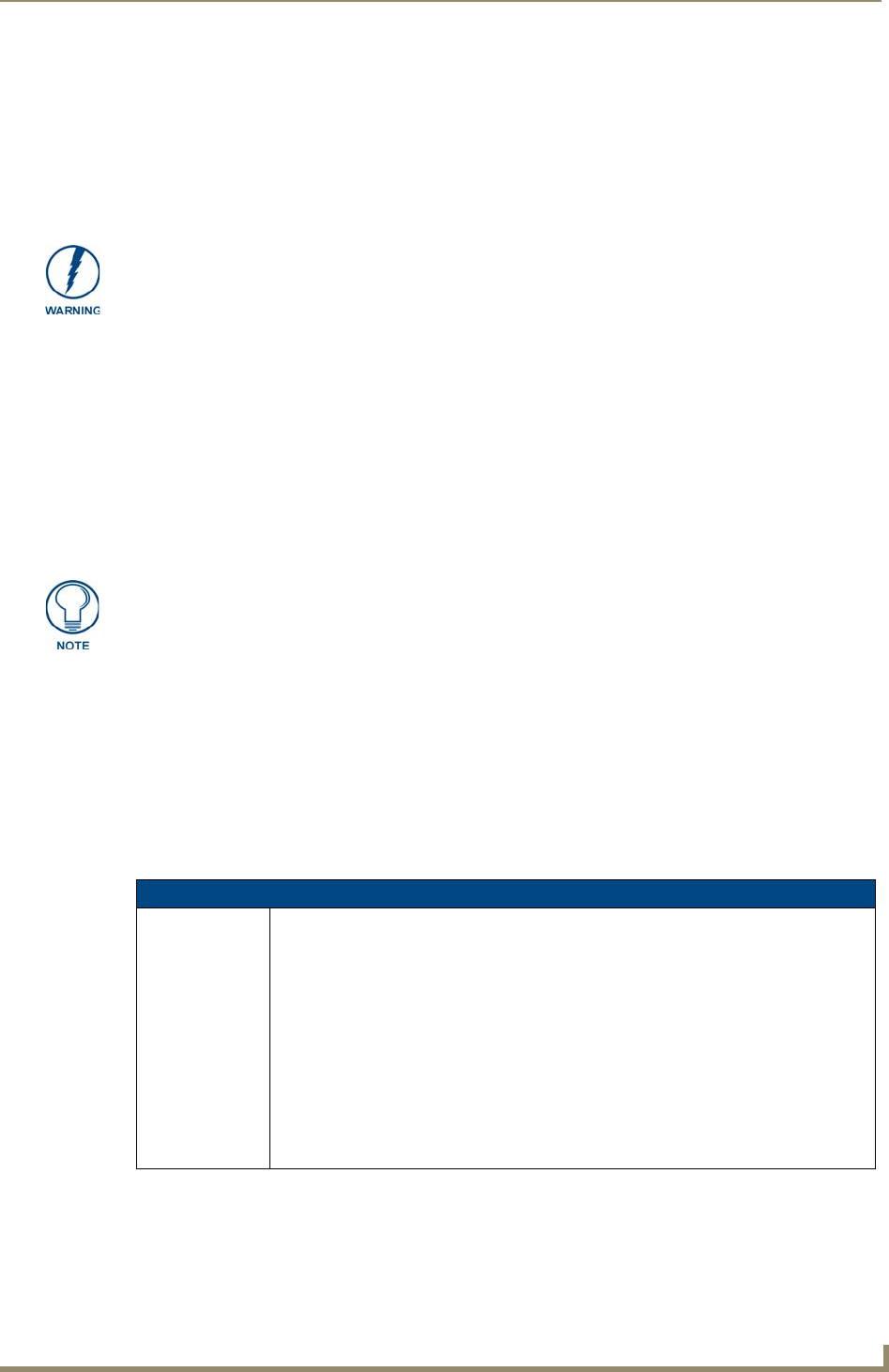
Programming
75
TPI-PRO Total Presentation Interface - Pro Edition
Programming
You can program a touch panel using the commands in this section to perform a wide variety of
operations using Send_Commands and variable text commands. Refer to the NetLinx Programming
Language instruction manual for complete information.
Button Assignments
You can program the TPI-PRO using the commands described in this section to perform a wide variety
of operations.
A device must first be defined in the NetLinx programming language with values for the Device:
Port: System (in all programming examples - Panel is used in place of these values and represents all
compatible G4 devices).
Page Commands
The following NetLinx Page Commands are supported by the TPI-PRO, and are not case sensitive.
Verify you are using the latest NetLinx Master firmware. Verify the NetLinx Studio
program being used is version 2.4 or higher and TPD4 is version 2.8 or higher.
• Button Channel Range: 1 - 4000 Button push and Feedback (per address port)
• Button Variable Text range: 1 - 4000 (per address port)
• Button States Range: 1 - 256
(0 = All states, for General buttons 1 = Off state and 2 = On state).
• Level Range: 1 - 600 (Default level value 0 - 255, can be set up to 1 - 65535)
• Address port Range: 1 - 100
Button assignments can only be adjusted in TPD4, not on the panels themselves.
Page Commands
@APG
Add a specific
popup page to a
specified popup
group.
Add the popup page to a group if it does not already exist. If the new popup is added to a
group which has a popup displayed on the current page along with the new pop-up, the
displayed popup will be hidden and the new popup will be displayed.
Syntax:
"'@APG-<popup page name>;<popup group name>'"
Variable:
popup page name = 1 - 50 ASCII characters. Name of the popup page.
popup group name = 1 - 50 ASCII characters. Name of the popup group.
Example:
SEND_COMMAND Panel,"'@APG-Popup1;Group1'"
Adds the popup page ’Popup1’ to the popup group ’Group1’.



